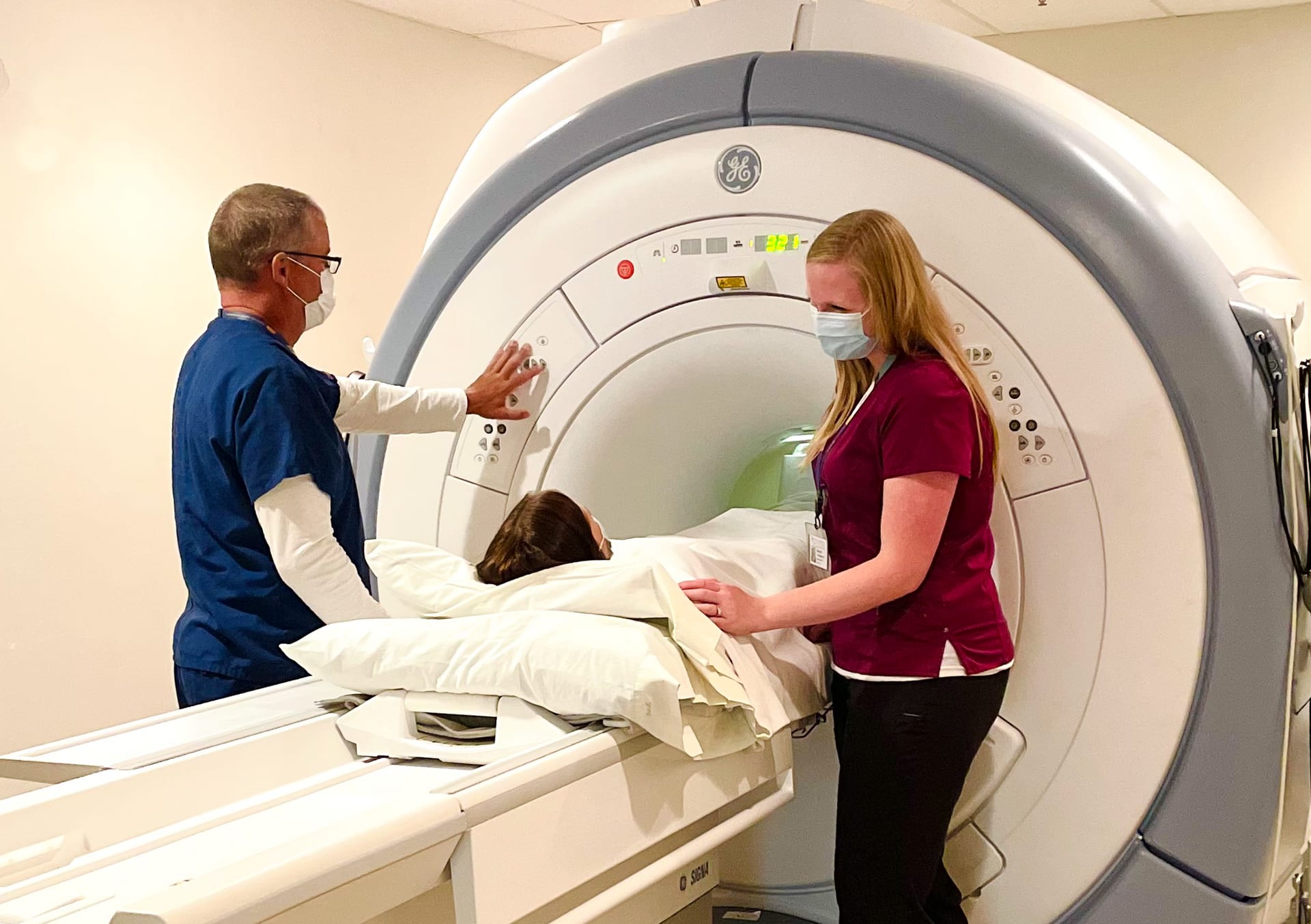We strive to continually stay up to date with current technology and make sure our practices meet the needs of our patients and the surrounding community. Stevens Community Medical Center has all the radiology services that a large healthcare organization has and staffs a group of radiologists on demand to review the images. Those images and reports are shared with your physician/ordering provider, who will then contact you with the results. Below is a list of the radiology services that are available on-site. Consult your physician if you have questions.
CT
Computed Tomography (CT) is a diagnostic imaging technique that uses radiation to produce images. Providers are able to view the body in cross-sectional plans to determine the extent of fractures, view vascular anatomy, and detect or stage cancers. SCMC has a 64 slice CT machine that is available 24/7 so trauma and emergent cases can be performed whenever they are needed.
Ultrasound
Ultrasound imaging uses high-frequency sound waves to produce images from inside the body. Most ultrasound exams are painless, fast and easy. Most commonly ultrasounds are associated with monitoring pregnancies, but they can be used to diagnose many illnesses and visualize many organs within the body. Abdominal organs, blood vessels, and breast tissue are just a few of the things that are commonly imaged within this modality.
Mammography
Mammography is a type of low-dose, non-invasive X-ray used to examine breast tissue for any irregularities. Typically these are performed yearly once women turn 40 although they can also be performed on men who are having symptoms. SCMC provides 2D and 3D mammography. 3D mammography is an imaging technique that provides more detail about the breast tissue and allows the Radiologist to better localize areas of interest. SCMC provides cutting-edge technology in 3D™ Mammography. Learn about the Genius™ 3D Mammography™ option and if it’s right for you.
Breast health is an important part of your well-being. From adolescence to adulthood, your breasts will continue to change over time. Self-exams help you become familiar with your breasts so you know what’s normal for your body. As part of your preventative care visits, our providers will perform screenings and will recommend mammograms as needed. Visit our Breast Health page to learn about the importance of early detection and screening guidelines.
MRI
Magnetic Resonance Imaging (MRI) is a diagnostic imaging modality that uses a large magnet and radio waves to produce clear and detailed images of the body without the use of radiation. SCMC has a 1.5 Tesla magnet. MRIs produce diagnostic images that are great for viewing the muscles, tendons and tissues within the body. It can also be used to visualize fractures.
SCMC has some of the most clinically advanced MRI technology available. Aside from the fact we are fortunate to offer full-time MRI availability in a rural healthcare setting along with qualified MRI technologists. Advanced MRI technology not only has a much better quality of imaging and faster protocols, but a huge benefit is also that it is much more comfortable for the patient and has much better efficiency in time, so your scan is much faster.
X-Ray
X-ray is a type of imaging that uses radiation to produce diagnostic images. These exams are relatively quick and are typically used to visualize fractures. There are many other uses of x-rays, such as detecting pneumonia and monitoring changes post-operatively.
Mobile Nuclear Medicine
A Nuclear Medicine exam is a diagnostic procedure that uses a radioisotope and a special camera to detect energy in the form of gamma rays. It is used to check kidney function, lungs for respiratory and blood flow problems, the function of the heart, identify gallbladder blockages, and to evaluate the bones.
Mobile PET Scan
Positron Emission Tomography (PET/CT) is a non-invasive diagnostic imaging technique that uses a radioactive tracer solution and special cameras to create computerized 3D images of the body. PET scans detect changes in organ chemistry and cellular function, and changes that may take place before physical changes occur. Computed Tomography (CT) is a non-invasive diagnostic imaging technique that uses x-rays to create cross-sectional images of the body. PET/CT combines the functional information from a PET exam with the anatomical information from a CT exam into a single exam. When PET/CT exams are performed, your physician can view metabolic changes in the proper anatomical context of your body.
Spinal Injection For Back Pain
Lumbar Epidural Myelography with Therapeutic Injection (or spinal injection for back pain) is for those patients who have not responded to other treatments such as medications or physical therapy. An MRI is performed to discover the cause of the pain, then local anesthetics and steroids are used to relieve the patient’s symptoms. The success of this procedure ranges from slight improvement to complete relief. It may help some patients to avoid surgery, however, some patients may not experience any benefits from this procedure.
Echocardiography
An echocardiogram uses high-frequency sound waves on the chest to produce images of the heart. Echocardiography is a sub-specialty of Ultrasound that is also offered at SCMC and it specifically focuses on the anatomy of the heart. This type of exam is offered on Monday, Wednesday, and Friday and a Technologist comes from Minneapolis Heart to perform the exam.





